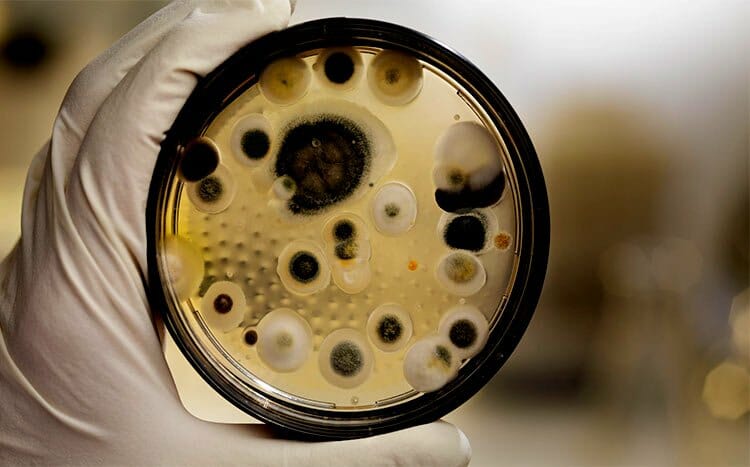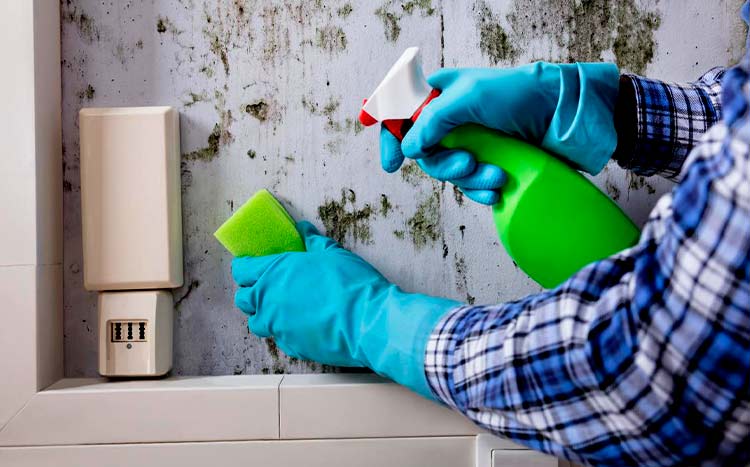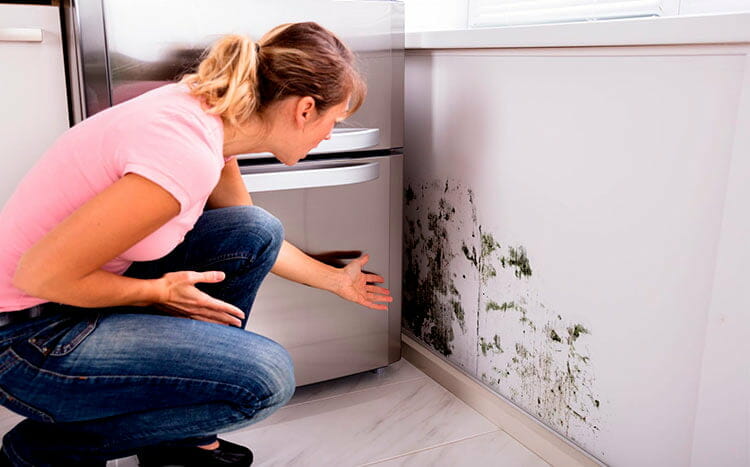Numerous individuals consider black mold to be a significant health hazard. Yet, a crucial inquiry arises: is it possible to conclusively ascertain the dangers and risks tied to mold simply through visual inspection? Moreover, does every instance of black mold pose as much of a threat as the majority of homeowners believe?
No, note all black mold is not dangerous. This is because most mold species take on different colors, including black, depending on the material that they are growing on, the amount of moisture to which they are exposed to and the general growing conditions that they develop in. As a result, the color of mold is an unreliable way of predicting its toxicity. Essentially, toxic mold species can be black. And so can non-toxic mold species.
Here is all that you need to know about black mold and mold toxicity.

What is black-colored mold?
Black-colored mold is mold that assumes a black color. And while generally, people use this term when referring to Stachybotrys chartarum, there are a lot of mold species that are black in color. Black mold species include Rhizopus stolonifer and Aspergillus niger.
What is black toxic mold?
Black toxic mold is the mold that is not only black in color, but also releases mycotoxins. In most cases, when people refer to black toxic mold, they are referring to Stachybotrys chartarum.
It is a toxic mold species that normally grows in homes after flooding, or in areas of extremely high humidity. It is believed to cause serious health complications that are typically more severe than those that other mold species cause.
What does black mold look like?
Black mold is black in color. And like other mold species, it can take on a rough, fuzzy, or velvety appearance, depending on its location and the amount of moisture to which it is exposed to.
Types of black mold?
Common black mold species include Cladosporium, Dresclera, Alternaria, Pithomyces, Ulocladium, Stemphylium, Aureobasidium, and the highly toxic Stachybotrys chartarum. Some of these types of species can be toxic. While others can be simply allergenic.
Cause of mold growth?
Mold growth is caused by the presence of excessive moisture. This may be due to high humidity inside a home, poor aeration, flooding, roof leak, leaks from appliances, or storage of damp or wet fabric in confined spaces.
Effects and symptoms of black mold exposure
Mold releases spores, and it is these spores that cause most of the symptoms associated with mold allergies. This includes the following.
- A running nose
- Worsening asthma symptoms
- Eye irritation
- Skin irritation
However, when someone is exposed to toxigenic black mold, the symptoms can be a little bit more extreme. This is so especially if they get exposed to the mycotoxins that these mold species produce, over a long period of time. In such a case, the affected persons may experience memory loss, fatigue, nosebleeds, and mood swings.
Mold prevention
The best way to prevent mold growth is to reduce the degree of moisture availability in your home by:
- Investing in a dehumidifier
- Fixing roof leaks and leaks from appliances as soon as possible
- Taking precautions to reduce incidences of basement flooding by waterproofing your walls and basement
You can also prevent mold by improving airflow in the home. To achieve this, you should consider:
- Investing in a good fan
- Opening windows and doors when cooking or when showering
- Decluttering enclosed spaces like basements in order to prevent basement mold
- Investing in a good air conditioning system that is appropriately sized for your home
Other steps that you can take to discourage mold growth include;
- Installing moisture-proof wallpaper and using water-resistant paints in bathrooms and other areas that are prone to moisture-spills
- Avoiding storing wet or damp items in the home
- Rigorously cleaning surfaces with bleach or any other anti-fungal spray
Identifying mold in your home
The following are the most effective ways of identifying mold in a home.
Smell
You can identify mold in your home based on its smell. If you notice the presence of a strong musty or earthy smell in your home, then you likely have a mold growth problem.
Appearance
Mold can also be identified by its appearance. It tends to cause discolorations that can be either white, black, grey, purple, yellow, green, or brown.
To distinguish spots caused by dirt from those caused by mold, using a diluted bleach solution is recommended. Simply apply the diluted bleach to the spots, and if they brighten up, then they are caused by mold.
Professional inspection and testing
Calling a mold testing company and having them conduct tests in your home is also an easy way of identifying mold. With this option, you can get detailed information on the mold species attacking your home. You can also be able to know the concentration of mold spores in your home.
Removing mold from home
To remove mold from your home:
- Start by wearing protective gear. This means putting on a protective face mask, wearing a good pair of rubber gloves, and wearing long-sleeved clothing. A pair of eye goggles will also help to keep mold spores off your eyes.
- After protecting yourself, the next step is to clean the surface affected by mold. Spritz the surface with a little bit of moisture and then use a brush to scrub off visible mold from the surface. Thereafter, vacuum the surface with a vacuum that has a HEPA filter.
- With the surface cleaned up, simply spray the area with a mold-killing solution. This may be undiluted white vinegar, diluted bleach, or even commercial mold-killing sprays.
- Give the solution enough time to kill the mold, and then wipe off any excess solution from the surface with a dry cloth. For some solutions, you may need to rinse after, while for others, you don’t have to. Simply follow the instructions that come with the solution.
- After you are done, let the surface air dry.

Do you need professional testing?
Generally, as a homeowner, you don’t need professional testing. This is because provided you can see and locate the mold, it usually doesn’t matter what species of mold it is. Removing it by using mold-killing chemicals and solutions will work no matter the mold species.
However, there are times when professional testing is advisable. The following are cases where a homeowner may need it.
- If you want to sell or buy a home with mold, you may need to find out the extent of the growth
- In case of litigation and you need proof of a mold infestation is responsible for your health problems or property damage
- If you are experiencing symptoms that are similar to those associated with mold exposure and you simply want to confirm whether mold is to blame
- After remediation, professional testing may be necessary to confirm whether the mold remediation was effective
How are mold allergies diagnosed?
Mold allergies are diagnosed through observation. They can also be diagnosed by examining a patient’s medical history. And if their symptoms are similar to those that are commonly associated with mold exposure, then they probably have mold allergies especially if there is mold in their home.
A skin prick test can also be used to check for allergic reactions. And in the case of mold poisoning, a blood test usually comes in handy.
Basic symptoms of mold allergies
Basic symptoms of mold allergies include:
- Skin rashes
- Sinusitis
- Wheezing
- Watery eyes
- Runny nose
- Dry cough
- Eye redness
- Blocked nose
- Sore throat
- Dry cough
- Worsening asthma symptoms
- Respiratory complications
What are mycotoxins?
Mycotoxins are tiny particles that are released by some species of mold like S. chartarum. When inhaled, these particles can cause mold poisoning. This usually results in serious symptoms that go beyond just simple allergic reactions to mold spores. These symptoms range from:
- Unexplained fatigue
- Nosebleeds
- Mood swings
- Memory loss
- Severe pains and aches
- Headaches
FAQ's
No, black mold is not the only dangerous mold. This is because S. chartarum and other toxic mold species can assume any color, including green or purple. Essentially, mold color is a poor way of determining the toxicity of mold simply because a single toxic mold species can assume a variety of colors depending on the moisture content to which it is exposed and where it is growing.
No, not all mold is toxic. Only a handful of mold species can produce mycotoxins. And it is only these mold species that can lead to mycotoxicosis. These are the ones that are classified as being toxic mold.
All the other mold types can trigger allergic reactions in people who are allergic to mold spores.
No, black mold does not cause cancer.
Although toxic black mold was initially believed to cause blood cancer, subsequent studies have been unable to support this conclusion.
White vinegar still stands as the best cleaner to kill and remove mold simply because studies show that it can kill up to over 82% of mold species. The fact that it is affordable, environment friendly, and readily available, makes it ideal for use around the home,
No, it is not safe for people with pre-existing respiratory conditions, or who have a history of being allergic to mold, to sleep in a room with mold. Their exposure to mold spores will likely trigger an allergic reaction. And for people with pre-existing conditions, the mold spores can worsen their symptoms, something that may even put their lives at risk.
However, healthy people that don’t have a history of having a bad reaction to mold exposure can sleep in a room with mold without any problem.







